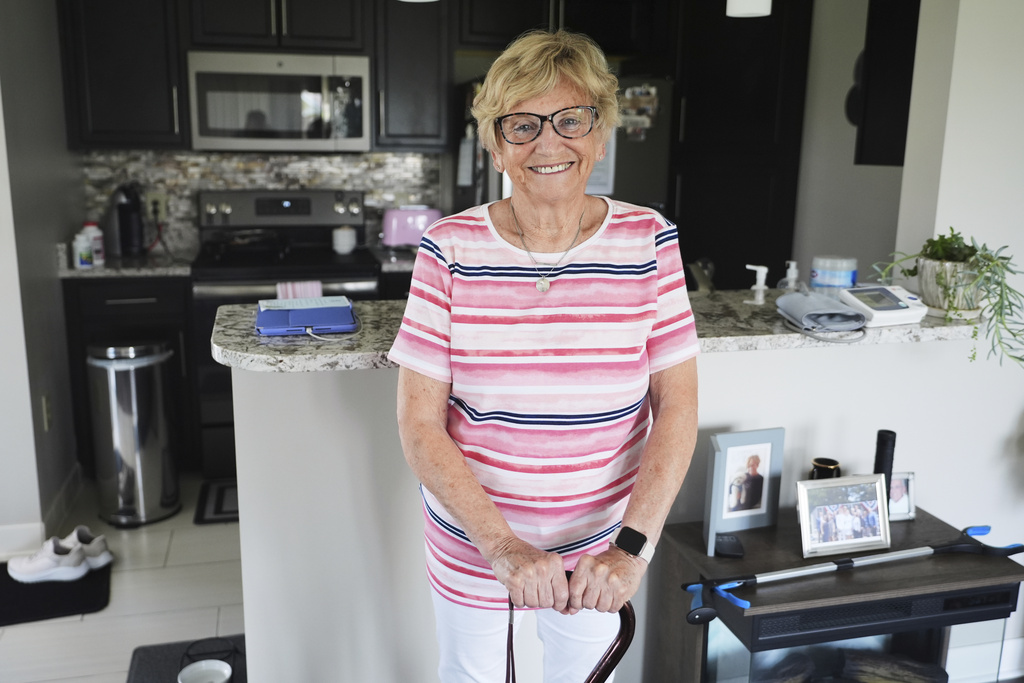A Push for Safer Speed Limits
Rose Hammond, an 85-year-old resident of northwest Ohio, has been advocating for years to lower the 55 mph speed limit on Mitchaw Road, a two-lane road that passes through her assisted living community, a church, two schools, and a busy park. The road is frequently used by youth sports leagues, and she has raised concerns about the motorcycles that race by daily.
“What are you waiting for, somebody to get killed?” she asked officials, frustrated with the lack of action. Amid growing public pressure, Sylvania Township requested a review from county engineers in March to determine if the speed limit on Mitchaw Road was too high. The surprising result: Technically, it’s 5 mph too low.
This outcome highlights a broader debate over how speed limits are determined across the United States. The traditional approach, known as the 85% rule, suggests that the posted speed should reflect the speed at which 85% of drivers travel. This method originated from studies conducted on rural roads in the 1930s and 1940s, but its influence persists even in urban areas today.
The 85% Rule and Its Limitations
The 85% rule assumes that the safest speed is the one most vehicles naturally travel at, creating a feedback loop where drivers speed up, and speed limits are adjusted accordingly. However, critics argue this approach can be outdated and risky. Jenny O’Connell, director of member programs for the National Association of City Transportation Officials, noted that this method creates a cycle where speeding leads to higher speed limits.
In response, some cities and states are exploring alternatives. The “City Limits” initiative, developed by the National Association of City Transportation Officials, aims to set speed limits based on factors like pedestrian activity and crash frequency rather than just driver behavior. This shift reflects a growing emphasis on safety over convenience.
Federal Guidance and State Responses
The Federal Highway Administration (FHWA) recently updated its guidelines, signaling that the 85% rule should not be the sole determinant for setting speed limits. The agency now encourages communities to consider factors such as road usage, pedestrian risk, and crash data when establishing limits. While some states have begun incorporating these changes, others remain resistant to moving away from the familiar 85% rule.
Leah Shahum, director of the Vision Zero Network, acknowledged that while the FHWA’s update is a step forward, more needs to be done. She emphasized that the 85th percentile should not be seen as the ultimate authority on speed limits.
Local Efforts and Challenges
Cities like Madison, Wisconsin, and Seattle have taken steps to lower speed limits in residential areas, with positive results. For example, Seattle’s pilot program saw a decrease in serious injury crashes and a drop in the 85th percentile speed. California, however, still heavily relies on the 85% rule, though recent legislative changes allow local governments to adjust limits if there is a clear safety need.
Advocates for pedestrians and bicyclists argue that while these changes are a start, more progress is needed. Kendra Ramsey of the California Bicycle Coalition pointed out that cars are still given priority over other road users.
On the other hand, Jay Beeber of the National Motorists Association believes the 85% rule is the safest way to reduce speed variation among drivers. He argues that the posted speed limit should align with how drivers naturally use the road.
Rising Speed Limits and Safety Concerns
Since the 1970s, speed limits have steadily increased, with some states allowing speeds of 80 mph or higher on certain highways. A 2019 study by the Insurance Institute for Highway Safety found that every 5 mph increase in speed limits raises the risk of fatalities by 8.5% on interstates and 2.8% on other roads. Chuck Farmer, vice president for research at the institute, noted that modern vehicles make it harder for drivers to gauge their speed accurately.
A Town’s Struggle for Change
Sylvania Township’s attempt to lower the speed limit on Mitchaw Road faced unexpected challenges. While the town initially wanted to reduce the limit to 40 mph or lower, county engineers found that the 85% rule actually suggested raising it to 60 mph. This revelation surprised local leaders, but not the engineers who conducted the analysis.
Ohio law currently sets maximum speeds for different types of roadways, making it difficult to adjust limits based solely on the 85% rule. However, the state is evolving, with new guidelines that consider roadway context and allow cities to lower limits based on the 50th percentile speed when pedestrians and bicyclists are present.
Despite these efforts, it remains unclear whether any changes will ultimately affect Mitchaw Road. After years of advocacy, Rose Hammond admits she is discouraged. “I just get so discouraged,” she said, highlighting the ongoing struggle for safer streets.



